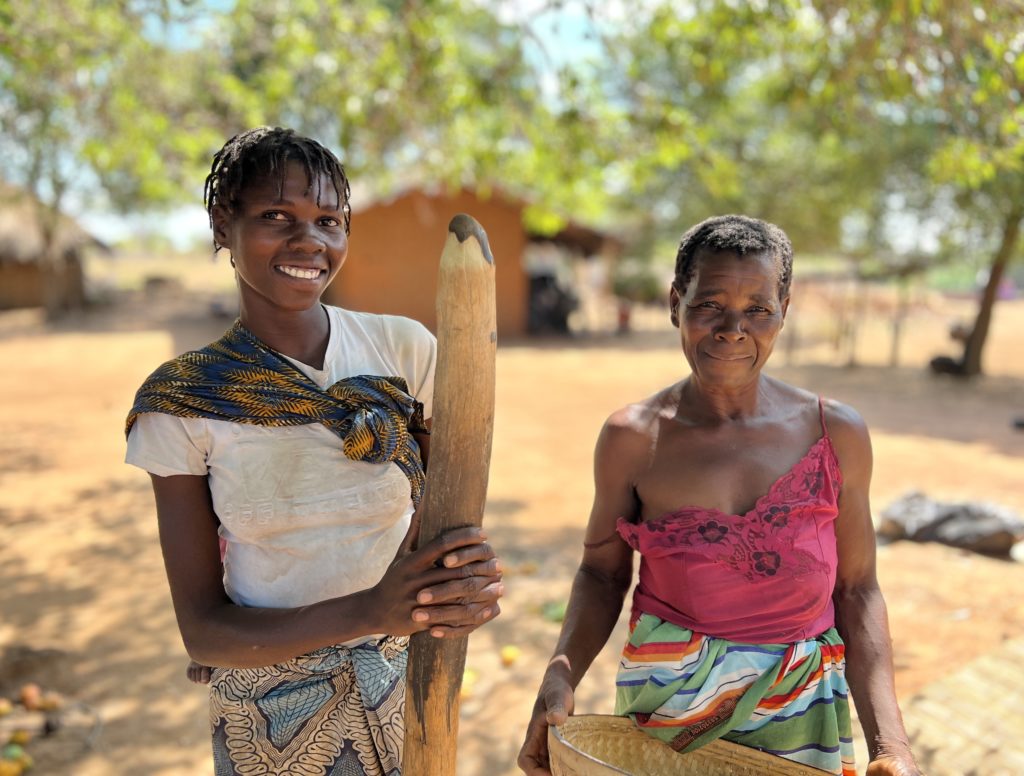March is a busy time for agricultural soybean instructors working in the Majune district (Niassa).
Like every year, more than 150 instructors travel to the province of Niassa to accompany peasant families to improve their crop fields and at the same time to provide them (not give them) tools, seeds, etc. These people are farmers from other provinces who, after leaving their families in charge of their crops, do extra, well-paid work at the service of the Mundukide program. The team’s objective is to increase the production of each of the families that participate in the program and at the same time identify and put in contact the greatest number of active merchants in the area, since this is what contributes the most to competitive marketing and to improving prices for peasants. To attract them and ensure that they offer the best prices for farmers, the program offers them advantages such as access to information or facilitation of contacts (number of producers and volume of the harvest). This has become a main activity that is devotes significant effort. These relationships are not limited to the districts in which the program implements its activities, but also cover a good part of the districts of the entire northern zone (Cabo Delgado, Niassa, Nampula and northern Zambezia), since that is the area both commercial and agroecological in which the Lichinga-Pemba corridor is inserted.
Just over 1 million people live in the districts where Mundukide works and studies carried out by the program show that: except in Montepuez where it is around 10%, in the rest of the districts the adult population that has formal employment does not reach 5%. In the Lichinga-Pemba corridor, 85% of families have family farming as their main livelihood activity. The portrait of the ‘typical’ peasant family is made up of 5 people. Work an area of 1.5ha. Use only axe, hoe, machete and local seed. It does not use fertilizer, machinery, insecticides, or improved seeds. Produces ~1.2tn of cereals, 100kg of legumes
and small quantities of other crops, whether food (pumpkin…) or income (cotton…). The entire harvest has a total market value of 10,000-15,000MZN (about €200) for the entire year; that is, one third of a Mozambican annual minimum wage. Of all production, approximately two-thirds is consumed directly at home and one-third sold to obtain some monetary income. From which it follows that the average family earns about €70 throughout the year. In these years, the program has achieved, according to the district, that 15-30% of families have increased their annual monetary income by 200-500% to €150-500/year. Nowadays, the participation of farmers is mainly articulated through 2 mechanisms: On the one hand, there is the continuous feedback that reaches the program through their presence in the field. With its own team made up of ~30 people and a group of 100-150 instructors living and working directly with the participants; It continually receives suggestions, complaints, proposals and information that helps it react quickly to the needs and desires of the participants. On the other hand, there is the effective participation of farmers in the various activities promoted. The program always supports a range of different technical/crop options and continually monitors participation in them and the degree of adoption. Since participation does not consist of benefiting from free inputs or paid training, but rather working (with the assistance of the instructor) with one’s own means and in one’s own field; It is quickly detected which actions have a positive impact and which do not; when the number of participants, in a crop/technique
increases, or the dedication of the production companies increases, is a clear indicator that it is providing them with benefits that they themselves value as good. And when participation does not grow, it is also proof that it is not working for them. The program continually measures participation and based on this decides which options to enhance, reformulate or abandon. And at the same time, especially through continuous communication with a wide network of contacts (buyers, exporters, transporters…), it continues to always look for new techniques/crops to guarantee that a range of options is offered.
diverse enough to interest people in different circumstances. It is a fully active participation system,
in which it is the farmers, with their effective actions, who decide what the program supports and does not support.


